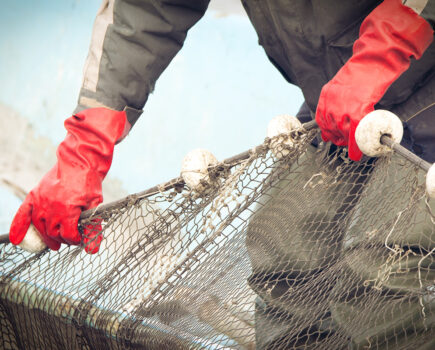UK government wants to retain principle of a discards ban after Brexit. High risk of frequent chokes by secondary species remains a key issue to address.
The basics of how a UK discards ban might look after Brexit was spelled out at a meeting of the Seafish discards action group in London on 18 July, reports Tim Oliver.
The UK government has said it wants to retain the principle of a discards ban after Brexit, and NFFO chief executive Barrie Deas gave his view of some of the elements that could be involved in setting up a UK scheme.
He began by highlighting the problems with the existing landings obligation. These included a lack of integration between the different components of the CFP; the problems created by applying the landings obligation to mixed fisheries where there is a high number of TAC species; and the potential for choke species – which may be essentially unpredictable.
He also looked at the existing ‘tool box’ of measures that are available to mitigate problems, such as a minimum percentage of allowable discards (de minimis), quota transferability, national and international swaps, borrowing and banking, and exemptions for species with high survivability such as plaice.
While these, with some important caveats, might work for the main species, all the evidence points to frequent chokes by secondary species. It was going to be necessary to extend the range of tools available to avoid fleets being tied up. One option would be to reduce the number of TAC species subject to the discards ban through such measures as grouping together some individual TACs, or scrapping TACs altogether for some secondary, non-target species.
The Commission has already scrapped the TAC for dab and flounder, and is currently discussing whether they could be scrapped for other species.
The central purpose of a workable discards ban would be to create an incentive to minimise unwanted catches and unwanted mortality of fish.
Barrie Deas highlighted the problem of choke species in the mixed fisheries in UK waters. He suggested that this should be addressed by adopting a two-stage approach; firstly applying the landings obligation to primary target stocks and then, later, to secondary by-catch species, as knowledge allowed and implementation issues were dealt with.
Individual TACs should be applied only where ICES advice was that a TAC was the best way to maintain a given stock’s conservation status.
An integrated approach of ‘mutually supportive measures’ would be needed, including setting TACs within flexible fishing mortality ranges, appropriate technical conservation rules and quota management, and using high survival exemptions. In the case of the latter, Barrie Deas said the ‘burden of proof’ that species had a high survivability should be reversed – the criterion used should be to ask whether the inclusion of a stock would lead to an increase in its mortality.
Contingency planning would be needed because ‘chokes may be essentially unpredictable’ and there would need to be the administrative scope, possibly as an interim measure, to suspend the discards ban when a choke was imminent, to ensure fisheries remained open.
In the slightly longer term, income from over-quota fish landings sold for fishmeal or other purposes should be put into a science fund.
Finally, Barrie Deas stressed the need for accuracy of discard estimates to ensure that resulting quota uplifts were allocated to the corresponding fleet sectors.
Read more from Fishing News here.








